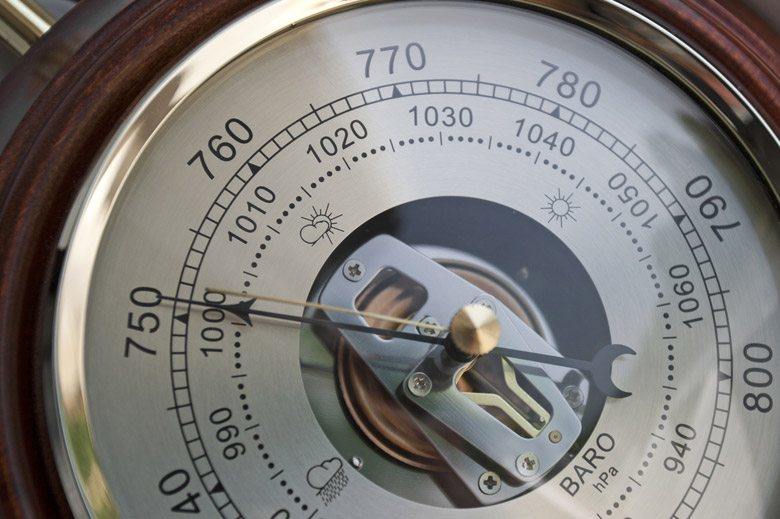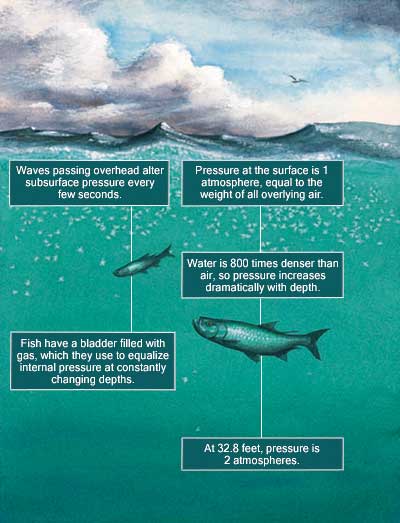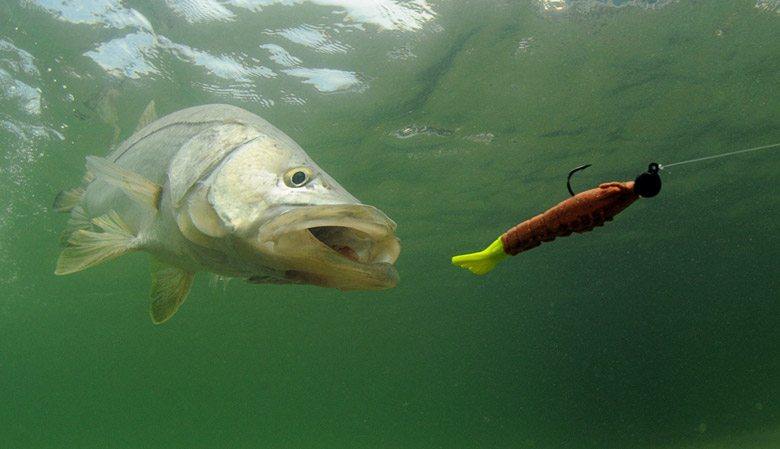Do you ever wonder how barometric pressure and fishing correlate with each other? If you do then you come to the right place. In this article, I’ll try to determine whether barometric pressure affects the success of fishing.
You know how we, humans, can feel fatigue when it’s raining out and the air pressure has changed. This same theory also applies to fishes- they slow down when the barometric pressure is high. For more details of this theory, keep on reading.
More...
What Is Barometric Pressure?

Before anything else, let’s define barometric pressure. According to Environmental Monitor, barometric pressure refers to the weight of the atmosphere at ground level. It has significant effects on the weather and water conditions.
Think of it this way. The overlying air rises when the barometric pressure is low and it sinks when the barometric pressure is high. Low barometric pressure can result in a rainy weather while a high barometric pressure may produce a sunny weather.
This atmospheric parameter is measured in millibars or inches of mercury. Typically, the liquid mercury used in barometers is used to measure the changes of pressure in the atmosphere. High pressure can reach as high as 30.70 inches while low pressure can go as low as 27.30 inches. The normal reading of pressure is around 30 inches.
Types Of Barometers
There are many types of barometers available through the years, including mercury, aneroid, and electronic.
Mercury
As indicated by its name, mercury uses an open mercury cistern to read barometric or atmospheric pressure. The level of mercury rises or lowers as the air presses the open mercury in the tube.
Aneroid
This device uses a tiny metal box, known as aneroid cell, to measure atmospheric pressure. The metal box expands or contracts as the air pressure changes. This type of barometer is what you often see in weather stations.
Electronic
Electronic barometers are mostly used by modern meteorology and navigation. Their mechanism is a bit complex as they use sensors to estimate the ground above sea level. These include a strain gauge to amplify the change in voltage.
Which should you buy? I suggest buying an aneroid barometer because it works really well. It also looks attractive on a wall. But remember that the readings might be influenced by closeness to vents, air conditioners, and humidifiers.
The Effect Of Barometric Pressure To Fish
The precise impact of barometric pressure on fish, if any, isn’t exactly clear. While there’s little scientific evidence to support this theory, many fishermen pledge that barometric pressure serves a significant part in the success of a fishing trip.
A fish has an air bladder that can feel pressure changes. For this reason, fishes with large bladders seem to be the most affected with the barometric pressure changes than those with small air bladders. However, forage fish that the more valuable fish eat have air bladders too, and this alone could have a large effect on where you might locate the fish.
Fishes with large bladders have less pressure on their bladder that’s why they can immediately feel the drop of air pressure on the water. And when pressure is less, their bladders slightly expand, making them feel uncomfortable. They appease their discomfort by swimming deep underwater.

Via: https://www.theonlinefisherman.com/
It’s important to note that barometric pressure is much felt in shallow and fresh waters. This is probably because the pressure in deeper water is already greater making the air pressure above insignificant.
SEE ALSO: The 5 Best Underwater Fishing Camera in 2017 – Don’t Buy a Fish Finder Until You Read This
Suggested Fishing Techniques For Every Pressure Trend

The change in pressure may affect the behavior of fish. Here’s how you can fish successfully depending on the pressure trend.
High Pressure
If the pressure is high, the skies are typically clear. The fish may slow down and seek cover or swim in deeper waters during this time. To fish successfully, try using more attractive baits and slow down lures. You can also fish in deeper waters where the fish usually go.
To attract bites, you can use slow fishing tactics, like vertical jigging. Try using some weedless hooks to bait the fish who are hiding into cover.
Rising Pressure
The weather is usually clearing or improving when the pressure is rising. At this time, fish may become a bit more active so The Online Fisherman suggests fishing at intermediate and deeper waters. You can also use brighter lures, like fluorescent, to attract the fish.
If the fish are staying in shallow water, try casting the lure next to their cover. Allow the lure to sink to deeper depths if the fish hides in deeper water.
Normal And Steady Pressure
When the weather is normal and stable, the weather is typically fair. The fish at this time behaves normally. That’s why this is the best time to experiment on different lures and baits.
Dropping Pressure
When the pressure is dropping, the weather might be degrading too. The fish at this time might behave and feed actively in response to the falling pressure. Take benefit of this behavior by speeding up lures. You can also utilize spinner baits to cast the feeding areas.
Slightly Lower Pressure
When the pressure is slightly lower, the weather is usually cloudy. Many fish at this time will move away from cover and take shelter in shallower waters. Some fish might even become more energetic. The right fishing technique is to utilize shallow running lures at an average speed.
Low Pressure
When the pressure is low, the weather is usually rainy and stormy. The fishes at this time seem to be less active and may not even feed as the bad weather continues. To fish at this kind of weather, aim at deeper depths. Since the fish are less active in feeding, you can focus on slow bait presentations.
If you want to learn some casting techniques, watch this video :
So, What’s The Best Barometric Pressure For Fishing?
The answer is between 29.90 and 30.90 and the pressure is quickly dropping. The fish will take the bite pretty much with anything. This is because the fishes at this time are most active and feeding.
I have actually kept a journal for my fishing expedition per pressure trend. I have been the most productive when the barometric pressure is falling. Strangely, I have good results when the pressure is high probably because I was influenced by the good weather.
Other Factors That Influence Fish Behavior
Aside from barometric pressure, there are other elements that can affect the behavior of fish. Here are some of them.
- Time of day: Fish becomes lethargic when the weather is hot so it’s best to fish early morning and evening because the water is cooler and they’re more active.
- Air and water temperature: Fish are more active when the temperature of air and water is cool.
- Water clarity: Cloud cover can invoke the fish to stay in shallow water
- Noise (e.g. thunder, man-made, etc.): Fish can easily get distracted with noise so they hide for cover.
- Moon phase: Fishing is more successful when you do it four days prior or post the New Moon phase Many people also find success during the Full Moon especially if the tide is low.
Final Thought
Strangely, there is an indirect relation between barometric pressure and fishing. Keep in mind that this is just a theory and there are some people who believe that barometric pressure has nothing to do with the success of fishing.
But hey, people who have experienced this firsthand are the best people to trust. The general consensus of anglers is to fish when the barometric pressure is falling because fish are aggressively feeding.
Please share with us what you think about this theory. Share this article with your friends if you like it.
Leave a Reply